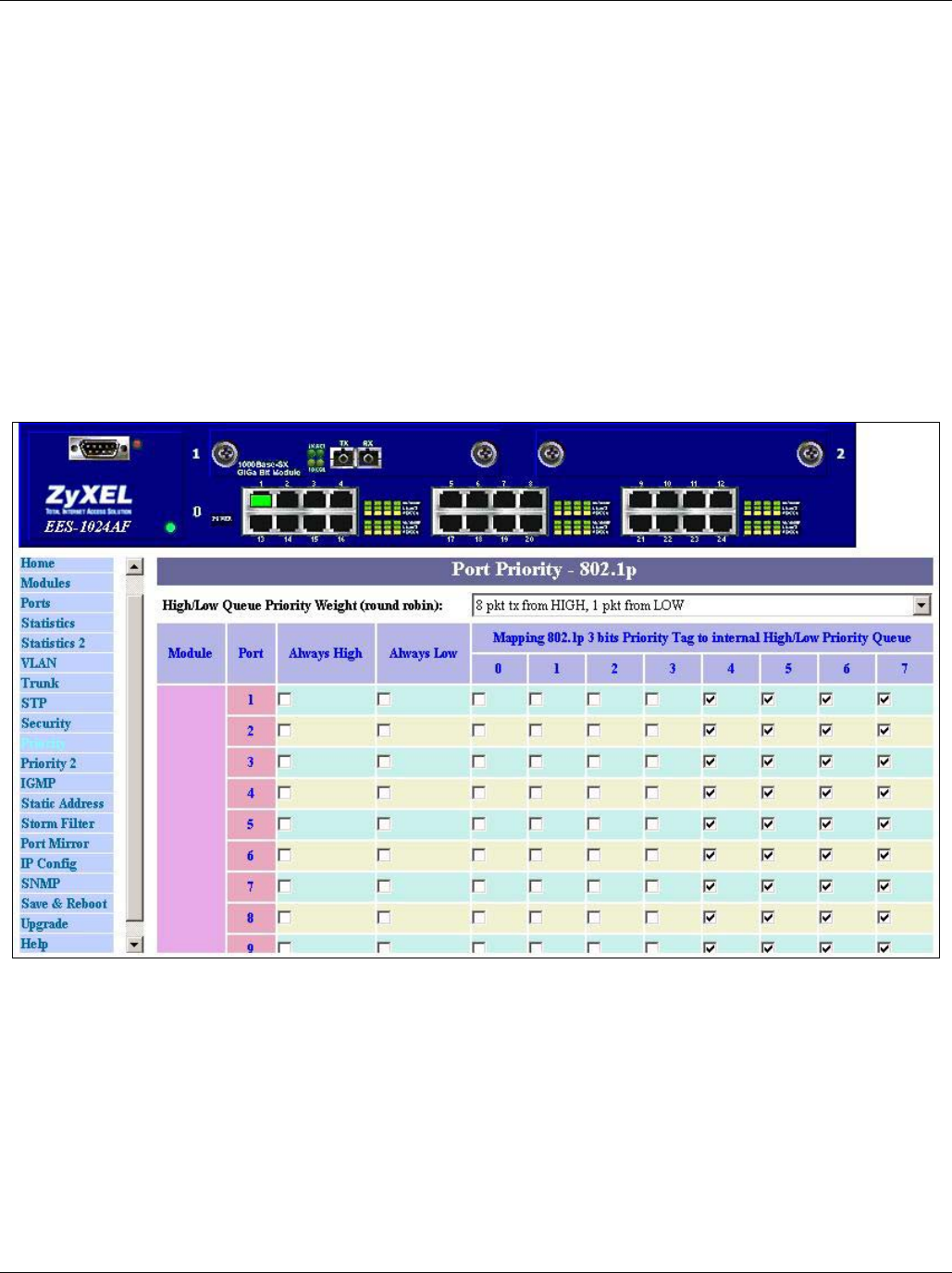
EES-1024AF Intelligent Ethernet Switch
Advanced Web Management 7-9
7.7 Port Priority – 802.1p
There are two priority queues ( high and low ) on each port. Each port arbitrates between two transmit queues (high
and low priority). The arbitration uses weighted round-robin between the high and low priority queues, and you can
adjust this weight.
7.7.1 Programmable Mapping of 802.1p to Internal Priority
The received packets with 802.1q tag are assigned priority according to a flexible (fixed for the old 48310 and
48320 module) and programmable mapping of the 802.1p user-priority tag (3 bits, value from 0 to 7) to the internal
priority queue. The default is to assign a packet to high priority queue when the 802.1p user-priority tag is 4 to 7,
and to low priority queue when the 802.1p user-priority tag is 0 to 3. Check the corresponding mapping checkbox
to assign a high priority or uncheck that to assign a low priority.
Figure 7-7 Web Configurator - Port Priority (802.1)
7.8 Port Priority - Type of Service
Each port can parse the header of an incoming IPv4 header and identify the Type-Of-Service byte (TOS field). This
is extremely important with the deployment of Microsoft Windows 2000 and the emerging DiffServ standard,
which marks Voice-Over-IP and other real-time traffic using this field. This feature provides Layer 3 QoS.
If this function of a port is enabled, then the most significant 6 bits of the TOS (these 6 bits are also known as the
DiffServ Code Point "DSCP" field, value from 0 to 63) are used to assign a priority to the packet received from this


















